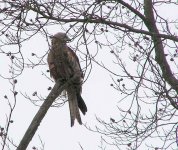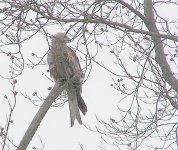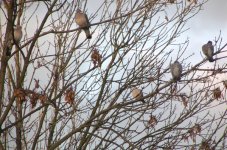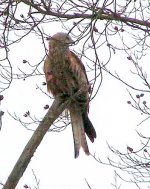What settings should I use when taking photographs in such dull conditions?
This kite were perched +/- 150ft away. The problem is, when takings pics on days like today, the colours are so washed out, and it begins to take on a silhouette appearance, especially when one has only sky as background.
I've tried more playing around with the levels, and added a little more contrast, but to no avail.
Suggestions gratefully received. Thanks.
ExposureTime : 1/650Sec
FNumber : F6.3
ExposureProgram : Program Creative (Sports mode)
ISOSpeedRatings : 200
ExifVersion : 0220
CompressedBitsPerPixel : 5/1 (bit/pixel)
ExposureBiasValue : EV0.3
MaxApertureValue : F3.7
MeteringMode : Division
LightSource : Unidentified
Flash : Not fired(Compulsory)
FocalLength : 63.00(mm)
This kite were perched +/- 150ft away. The problem is, when takings pics on days like today, the colours are so washed out, and it begins to take on a silhouette appearance, especially when one has only sky as background.
I've tried more playing around with the levels, and added a little more contrast, but to no avail.
Suggestions gratefully received. Thanks.
ExposureTime : 1/650Sec
FNumber : F6.3
ExposureProgram : Program Creative (Sports mode)
ISOSpeedRatings : 200
ExifVersion : 0220
CompressedBitsPerPixel : 5/1 (bit/pixel)
ExposureBiasValue : EV0.3
MaxApertureValue : F3.7
MeteringMode : Division
LightSource : Unidentified
Flash : Not fired(Compulsory)
FocalLength : 63.00(mm)








